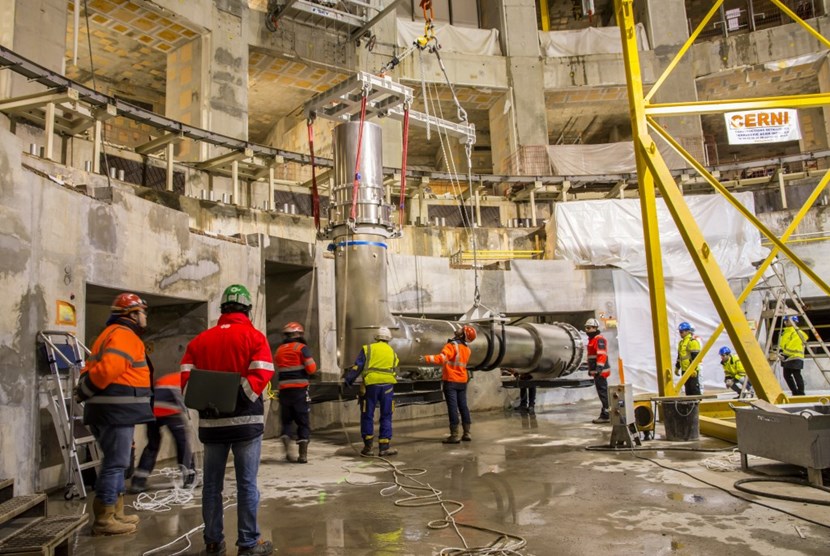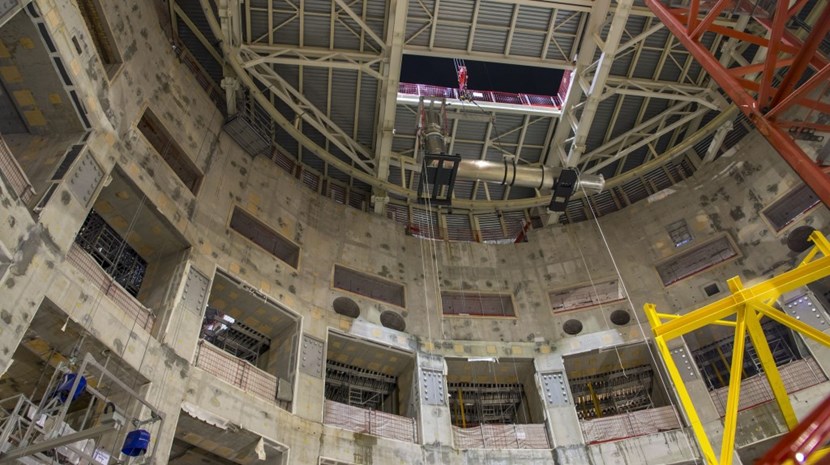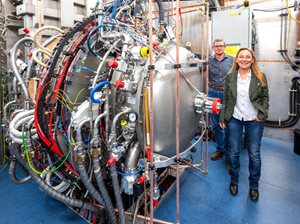ITER NEWSLINE
-
A new chapter
First machine component enters the Tokamak Pit
A new chapter | First machine component enters the Tokamak Pit
A new chapter opened last night in the history of ITER construction as the first machine component entered the Tokamak Pit through the narrow opening in the bioshield lid.

A highly symbolic moment inside the Tokamak Pit on the night of 26 November, as the first machine component was delicately lowered 30 metres down onto the floor, marking the beginning of five years of intense assembly activities.
The Sun had just set on the ITER worksite when the
cryostat feedthrough for poloidal field coil #4—a big, shiny stainless-steel pipe bent at a 90° angle—was slowly lifted from the Hot Cell zone to be deposited on the third level of the Tokamak Building.
There, passing from one crane to another, the 10-metre, 6.6-tonne component was delicately inserted through the rectangular opening of the lid, barely large enough to allow passage, and lowered onto the floor inside the perimeter of the Tokamak crown.
Since the cryostat feedthrough left the MIFI laboratory at the neighbouring CEA centre a week ago, six different lifting operations have been organized, involving four different contractors.

The 10-metre, 6.6-tonne component was delicately inserted through the rectangular opening of the lid, barely large enough to allow passage.
For Patrick Petit, ITER In-Cryostat Assembly Section leader, the faultless operation carried out on 26 November "demonstrated that we are ready to commence the assembly of the ITER Tokamak. We still have a lot of preparation work ahead of us but tonight marks the symbolic beginning of five years of intense assembly activities."
As work is being finalized in the crown opening that will accommodate it, the cryostat feedthrough will now be "cocooned" in protective material before being moved, next week, into its final position. Newsline is planning a full report.
return to the latest published articles








